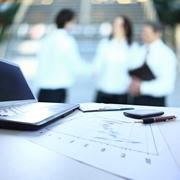Evaluating the Potential Use of the Red Macroalga Porphyra Sp. As A Biofilter of Fishpond Effluents
Student: Uri Arazi
Advisors: Prof. Sven Beer and Dr. Israel Alvaro
Student: Uri Arazi
Advisors: Prof. Sven Beer and Dr. Israel Alvaro
The aquaculture industry, whether using land ponds or mariculture cages, discharges large quantities of waste effluents which contains primarily dissolved inorganic nitrogen (N) and phosphorous (P). These highly polluting effluents endanger the surrounding environment and can lead to mortalities of many marine organisms. As part of the recent global concern to environmental issues and the negative effect of anthropogenic wastes, there is an extensive development of environmental protective laws and regulations on the aquaculture industry.
Thus, there is a growing trend to promote environmentally responsible production methods. However, the conventional effluent treatment methods only partially or inconsistently transform nutrients into other forms. Moreover, they require sophisticated technologies and thereby higher costs while having limited abilities to function under high nutrient loads. An alternative effluent treatment method is the sustainable approach of integrated multitrophic aquaculture (IMTA) of macroalgae with finfish effluents. In this way, the finfish nutrient wastes are recaptured and converted into algal crops of commercial value while improving water quality as well. A promising red alga for use in IMTA is Porphyra, also known as 'Nori', which is cultivated commercially for human consumption in the sushi industry, and is also used in pharmaceutics and cosmetics industries.
Because of its high productivity and economical value, Porphyra may be an ultimate macroalgal candidate for IMTA systems. The main objective of this study was to evaluate Porphyra's bioremediation potential for use in an integrated finfish aquaculture. Porphyra's bioremediation potential was proved to be very high in all our experiments. The laboratory experiments demonstrated biphasic uptake kinetics for both N sources. First, a linear phase of surge uptake filling up intracellular N pools was found at low N concentrations. Above that, a second hyperbolic phase with lower but fairly constant uptake rate was seen at high N concentrations. All other physiological parameters exhibited the same pattern of increase until saturation as a function of N availability, supporting the biphasic nutrient kinetic findings.
This was also verified by significant correlations among the various tested parameters. Additionally, it was found that Porphyra can consume simultaneously both N sources with higher affinity to NH4+ than NO3-. Under very high N concentration reduced uptake rates, photosynthetic quantum yield, pigments and protein content were observed, indicating N toxicity effects. Comparing our data with previous studies emphasizes the outstanding potential of Porphyra as a promising biofilter for integrated finfish aquaculture. Still, more comprehensive studies are needed to test different aspects such as large scale commercial production conditions and the impact of raw fishpond effluent on Porphyra 's quality as a food or biochemical product.




